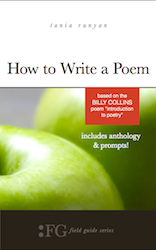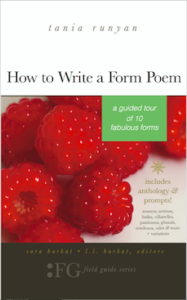Companion Title, From the Publishers of the Popular Book ‘How to Read a Poem’

Is it possible to teach someone how to write a poem? Or does poetry simply “come from the heart” or from a special talent only some can ever hope to have? Of course there’s no formula for writing an amazing poem. If poems came with instructions like IKEA® coffee tables, we’d all be missing the point.
But this book will give you some strategies—some tools, if you will—to assemble your personal, imaginative raw materials into poems that will surprise and intrigue. These strategies are focused primarily on free verse, yet many of the concepts can also be applied to form poetry, at both the inception and revision stages.
How to Write a Poem uses images like the buzz, the switch, the wave—from the Billy Collins poem “Introduction to Poetry”—to guide writers into new ways of writing poems. Excellent teaching tool. Anthology and prompts included.
What Readers Are Saying
For years I’ve searched for a poetry-writing text that provides enough substance without the inevitable overload of content I’ll never cover. Now my search is complete. The companion to her insightful and accessible How to Read a Poem (and written in the same inviting tone), Tania Runyan’s How to Write a Poem contains three essential elements I’ve yet to find in one poetry-writing text: generous and informed instruction, dozens of compelling example poems, and rich and plentiful exercises that avoid tricks and gimmicks. Any poetry-writing teacher would do well to assign this text. Any writer would do well to draft and revise poems based upon these prompts.
—Nathaniel L. Hansen; Assistant Professor of English & Creative Writing, University of Mary Hardin-Baylor; Director, Windhover Writers’ Festival
How To Write A Poem is a classroom must-have. Through a selection of evocative poetry and a series of accessible exercises, Runyan shows readers how to gather ideas, choose words, strengthen imagery and sound, and she models each of these skills as she writes alongside her readers. This is compassionate, beautiful writing that invites us into the world of poems.
—Callie Feyen, Middle School Teacher, Maryland
How to Write Form Poems
Whether or not you end up enjoying the form poem, we’ve seen the value of building your skills through writing in form.
One reader who explored the villanelle was even featured in Every Day Poems!

